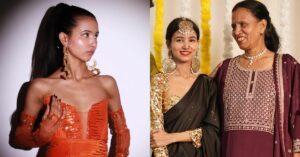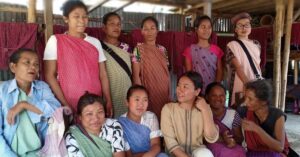A Techie’s Startup is Giving South India’s GI-Tagged Lambani Embroidery a Modern Twist
Niharika Elety's Bengaluru-based Tega Collective is an ode to native fabrics and dyes that are woven into beautiful designs by members of the South Indian Adivasi communities in Bellary, Karnataka.
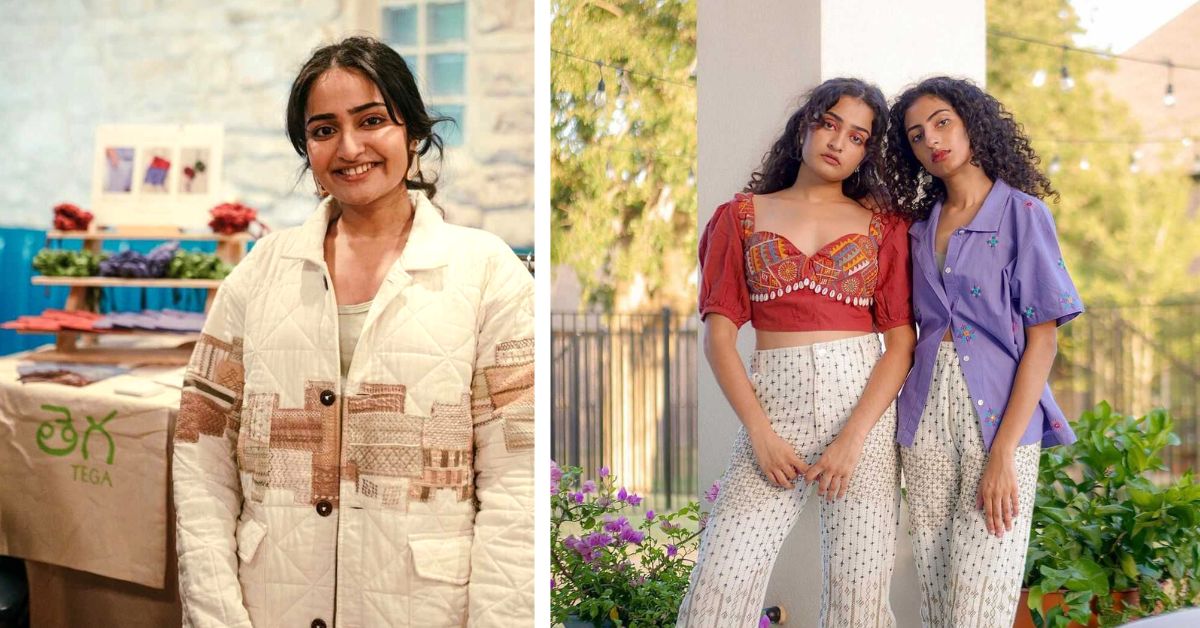
One look at Tega Collective’s range of garments is enough to convey a bold message; they are not afraid to play around with colours. The brand that hit shelves in July 2022 is a labour of love of not just its founder Niharika Elety, a tech professional, but also of the Adivasi communities in South India, particularly those residing in the Bellary region of Karnataka.
Niharika attributes her love for design and colours right back to the tender age of five when she recalls spending hours in art and craft. But it wasn’t only this passion that led her to create the brand. But rather an influence of the cultures where she spent her life that shaped a lot of how she felt about design.
Born in Dallas, Texas, Niharika moved across the world to Hyderabad when she was 11, a move that she describes as the one that changed the course of everything. Here, she studied South Asian fine arts and then went back to the United States to pursue her bachelor’s degree in biomedical engineering.
But she didn’t feel fulfilled.
This was when she started posting about sustainable fashion online and exploring fashion, culture and heritage. This excited her, and so whilst working in the tech space, she continued to explore sustainable fashion as a creative outlet.
The result of it is Tega Collective, a brand that she says is an ode to native fibres, plant dyes, artistic expression, and the way of life in Adivasi communities.
In conversation with The Better India, Niharika speaks about the fulcrum on which Tega rests.
“Tega is a word for family in Telugu,” she shares.
“For many indigenous communities in South Asia, everything on this earth is family. Through the brand, we aim to raise awareness about indigenous culture and craft while helping you add a unique story to your closet that you will cherish for years.”
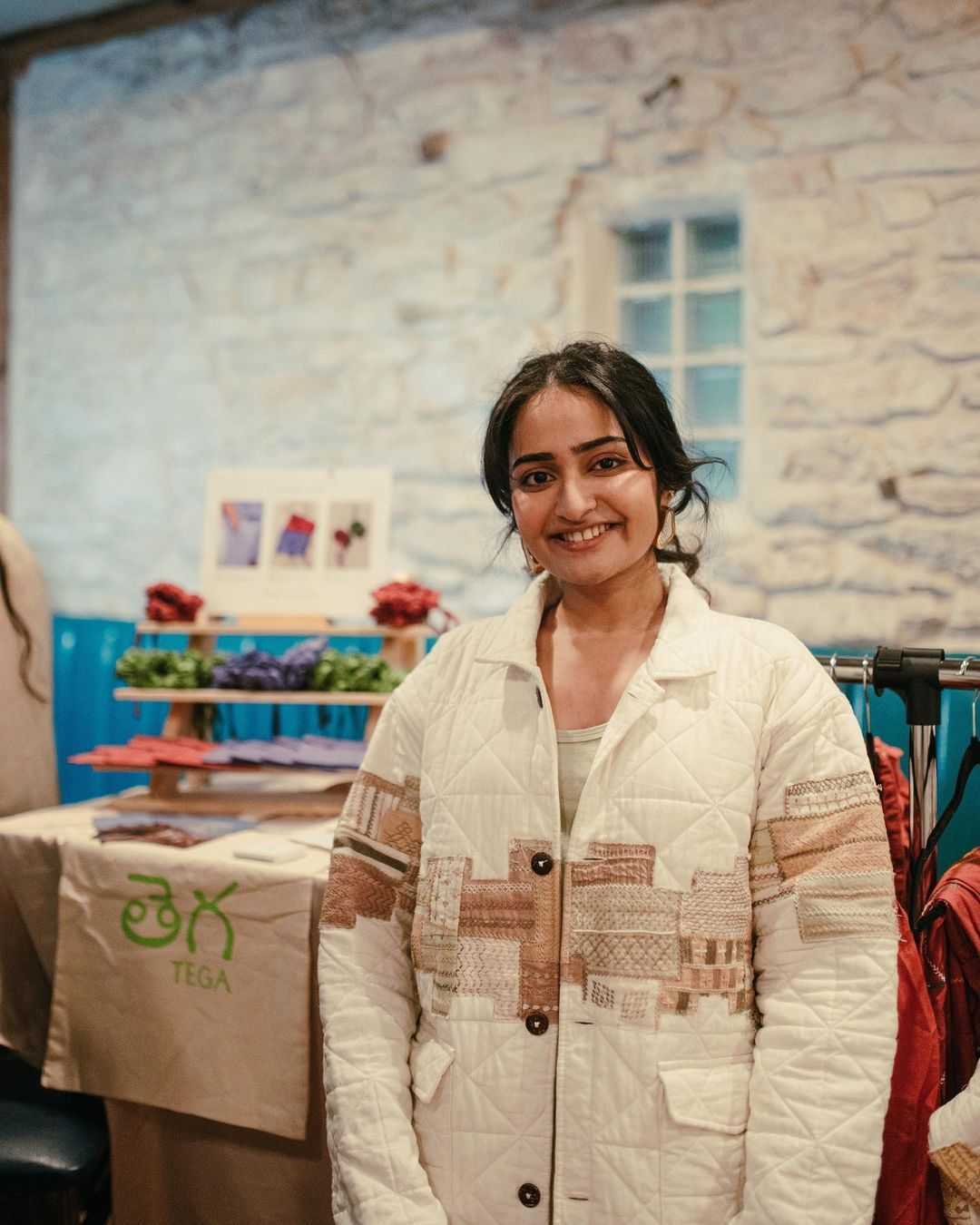
Amplifying indigenous craft and knowledge
Some moments in life are defining; ones that go on to change everything. For Niharika, one of these poignant moments was when at a panel with Adivasi Lives Matter — a media and knowledge organisation amplifying Adivasi youth voices through storytelling tools — she was hit with a thought.
“I wanted to act and bring awareness to indigenous textiles and fashion that were lesser known in India.” And just like that Niharika decided to start a brand that would do just this.
The aim of Tega, she decided, would be to co-create designs with a specific indigenous community and through this, highlight traditional colours, patterns and natural symbols.
One of their focus embroidery techniques and pride since inception is the Lambani craft, performed by the women of the Sandur Kushala Kala Kendra, an NGO that has been working with local Lambani tribal women since 1984.
The form of embroidery has held an allure of a special kind for decades and was even awarded the GI tag in September 2010. But for Niharika, it wasn’t just the beauty of the Lambani embroidery that drew her to it, but also the fact that it was fading away in the sea of western designs.
The fascinating tale of the Lambani embroidery
“The embroidery is so vibrant and decorative; qualities I was nostalgic for, and this caught my eye,” Niharika shares.
“The embroidery uses a variety of fourteen main stitches — kilan, vele, bakkya, maki, suryakanti maki, kans, tera dora, kaudi, relo, gadri, bhuriya, pote, jollya and nakra. These are inspired by geometric shapes, plants and nature. I love how embroidery, mirrorwork, cowrie shells and coins come together to create stunning pieces.”
What is fascinating about the art form is that the individual stitches come together to create a fabric that is a riot of colour and design. You may recall the Lambani embroidery from pictures of women wearing a distinct red headdress.
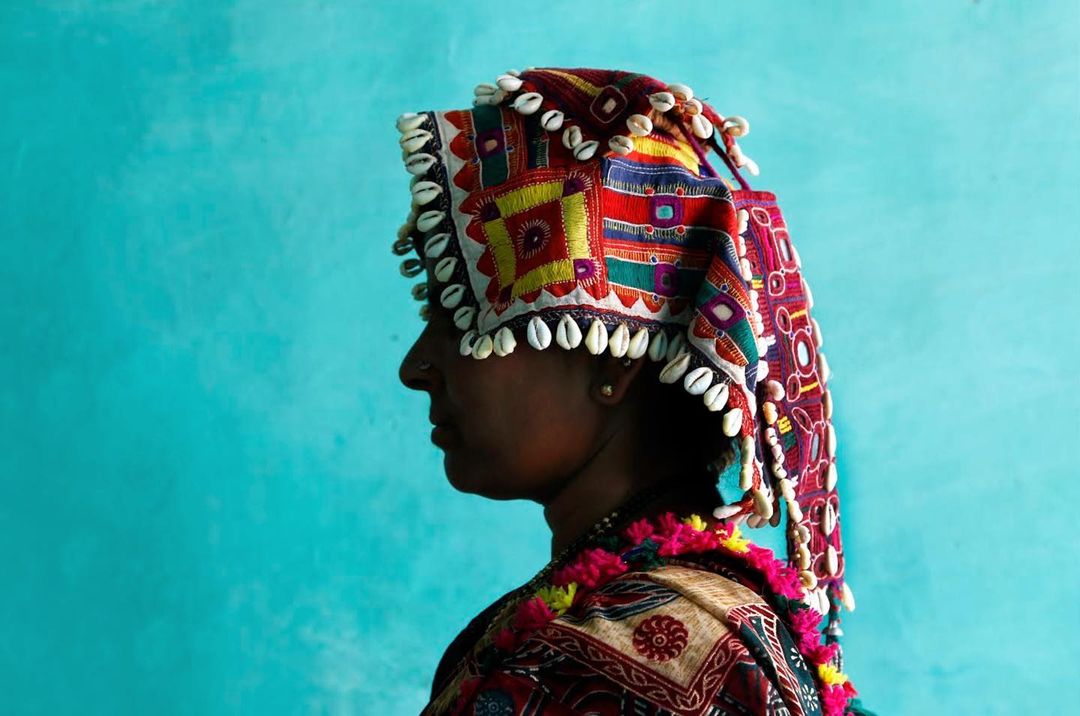
History says that when people of the Lambani communities moved from Central Asia to Rajasthan, Gujarat and South India, this headdress was a popular piece of clothing among the community.
The circular piece of fabric with its mirror work, cowrie shells and closely knitted stitches helped the women of the community to bear the weight of the heavy pots of water.
Today from the headdress, the colourful juxtaposition of stitches of the Lambani embroidery has a space in the contemporary markets. Tega Collective is a voice for this craft. Niharika shares that the brand chooses everyday silhouettes that people are familiar with like button-down shirts, blouses, hoodies, slacks, and dresses.
“We want everyone beyond the gender binary and wide range of sizes to feel comfortable wearing our pieces,” she adds.
Once the garment styles are decided, the colours are picked by consulting with the artisans.
“Three of the colours stand out — red, periwinkle and matcha green. Depending on the colours, we create these hues with natural dyes. In this case, we use madder root, indigo and marigold flowers to create the above colours.”
Two fabrics are popular at Tega Collective — khadi and eri silk, as these are donned by the Lambani people as well as support the local biodiversity.
She adds that all processes right from garment creation and handloom textile weaving to natural dying processes and stitching take place in Bengaluru. Once the garment is semi-stitched it is sent to Bellary for hand embroidery, wherein the team of 15 Lambani artisans from the Sandur Kushala Kala Kendra get working on it.
One of the artisans of the collective says her experience has been wonderful. “The designs are different and unique. We are given inputs on the designs, making it easy for us to understand; we can also share our feedback.” She adds that it is a pride to be working on an embroidery form that is part of the country’s heritage.
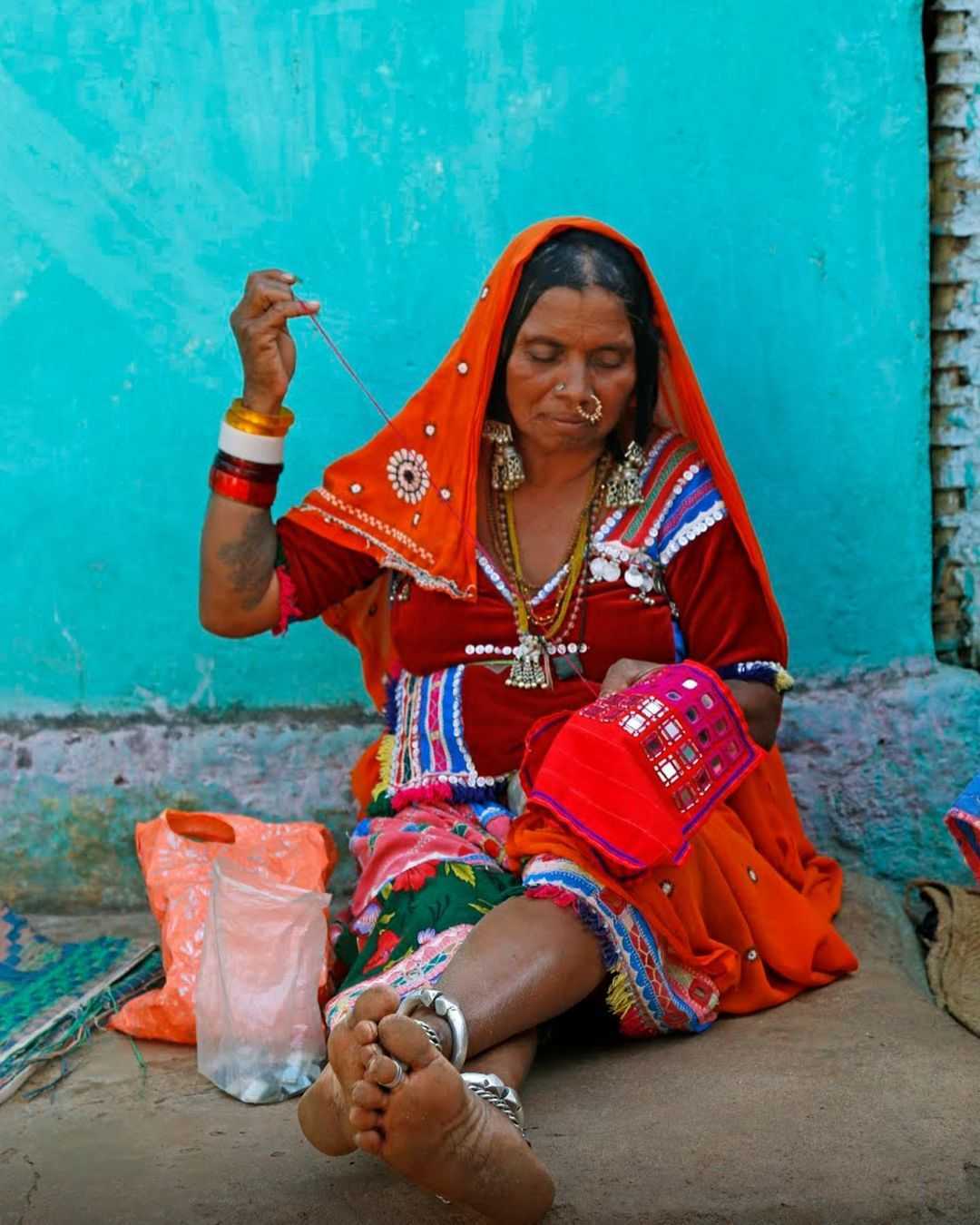
A colourful dream comes true
Indigenous communities across the world have been living sustainably and in harmony with our earth before sustainability was even a word in our language, points out Niharika, saying this was what fuelled her to start this brand.
“These communities cultivated reciprocating relationships with plants, animals, and soil throughout their practices while hunting, gathering, and creating textiles, and they still continue to hold on to these practices,” she says.
However, as noble as the thought was, Niharika says making the actual garments exactly as she envisioned them was the main challenge.
“Another one was marketing to consumers and resonating with them, making sure that everyone is doing the best they can without feeling overwhelmed.” But throughout the entire process, she emphasises that the goal has been to put the communities at the forefront and ensure they get their dues.
She shares that “15 percent of the brand’s proceeds are funnelled back to the communities they collaborate with to remove traditional hierarchy of power and profit”. Another three percent of profits are donated to organisations supporting indigenous community regeneration.
Today, Tega Collective is based out of Bengaluru in India and Dallas in the United States. It ships to the US, UK and India, clocking a total of around 25 orders every month. The range of garments includes slip dresses, jackets, trousers and more, priced Rs 6,000 onwards, and accessories, such as scrunchies and wallets, priced Rs 500 onwards.
But ask Niharika what she holds most dear about this entire journey, and she says it is her team. If you found our stories insightful, informative, or even just enjoyable, we invite you to consider making a voluntary payment to support the work we do at The Better India. Your contribution helps us continue producing quality content that educates, inspires, and drives positive change. Choose one of the payment options below for your contribution- By paying for the stories you value, you directly contribute to sustaining our efforts focused on making a difference in the world. Together, let’s ensure that impactful stories continue to be told and shared, enriching lives and communities alike. Thank you for your support. Here are some frequently asked questions you might find helpful to know why you are contributing?

“I’ve come to realise you need a team to create a collective, so don’t try to do everything yourself or nothing will get done well.”
Edited by Pranita Bhat
This story made me
-
97
-
121
-
89
-
167




